Back to the boardgame café. With
images; cc-by-sa on
everything.
The first game we tried was
War Chest,
something I've seen mentioned a lot recently. The basic idea is
interesting: it's a bag-builder, where you can use tokens either as
deployed units, as activation markers to do things to units already
on the board, or to buy in more tokens.
But somehow it didn't spark. It's rather chess-like in that you need
to keep an eye on where the enemy can move and attack, but at the same
time you're at the mercy of the bag draw to be able to do anything
about it. There's about as much planning as in Onitama (about three
moves ahead at most), but the number of options you have to choose
from is much more restricted, and the same silliness one finds in
something like
Up Front (where a
unit obviously ought to be the next one to move or attack, but can't
because the right card hasn't come up) turns up here too. (Which is
fine in a proper wargame – it's the core of something like
Chain of Command
which is trying to represent real scared soldiers – but in something
as abstracted as this, where the only difference between pikemen and
cavalry is a special power on the card, just seems frustrating.) As
the game progresses and units are eliminated, everything bogs down and
more of the tokens become useless, which doesn't help matters. Not for
me.
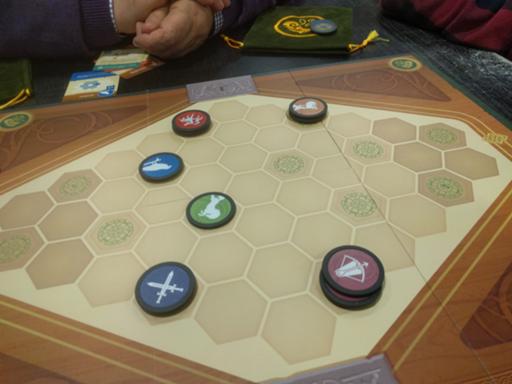
Next was the famously failed Kickstarter project
The Doom That Came To Atlantic City:
the houses are on the board already, and you're a Lovecraftian deity
smashing human society and opening gates.
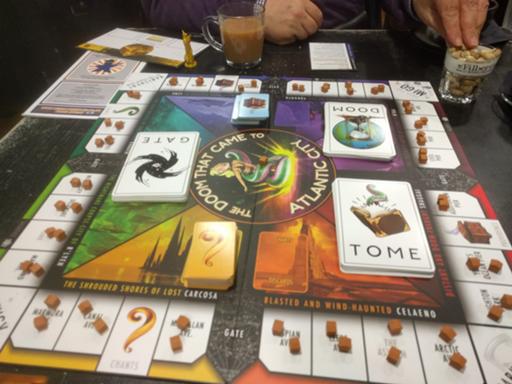
The basic problem for me was that, in order to be recognisably a
Monopoly derivative, it's still a roll-and-move game, which means
that far too much of one's play is controlled by chance. You may end
up on a gate, and thus be allowed to jump to a different gate after
you've rolled the dice for your next move; you may pick up a power
that gives you an optional +1 to your movement; or you may not, in
which case you may as I did play several turns in a row with no
decisions to make.
Keith Baker designed this, and I find that generally I'm not a fan of
his game mechanics (I do like
Illimat a great
deal, but that's apparently a reimplementation of a classic card
game). Gloom… is
OK, but I don't have a copy any more.
And that logo just makes me think of Tintin in a bikini.
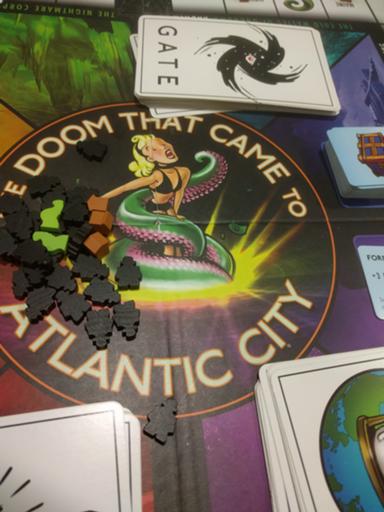
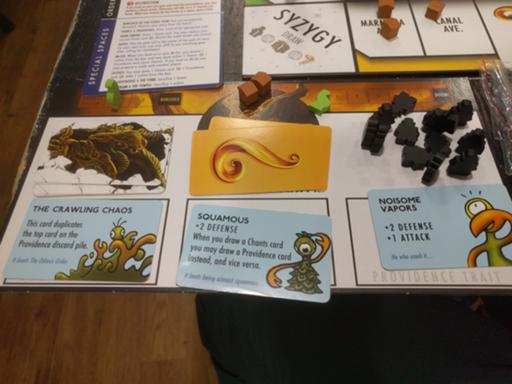
Finally, new hotness
Azul: Stained Glass of Sintra,
sequel to the 2017 hit
Azul. In short,
"the same, but more"; you have the same mechanism of taking all of a
single colour of tile off a circle or from the discard pile, but you
have much more complicated rules on where you can place it and how you
score when you do so. I've quite enjoyed Azul when I've played it,
for all I prefer
Sagrada, but
this seemed to be trying too hard to be "grown-up Azul".
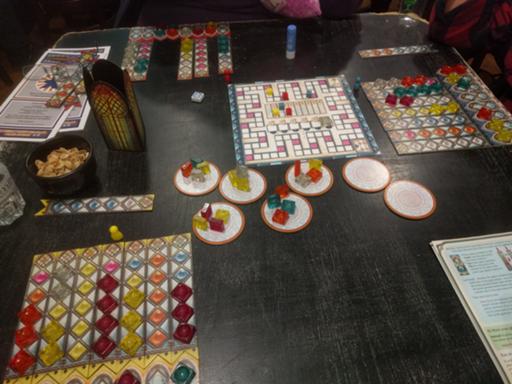
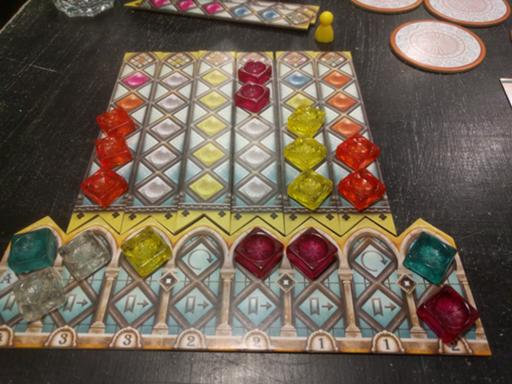
So this ended up being an evening of games we didn't enjoy much.
But the company was good and I save money compared with buying them
before playing.
Comments on this post are now closed. If you have particular grounds for adding a late comment, comment on a more recent post quoting the URL of this one.